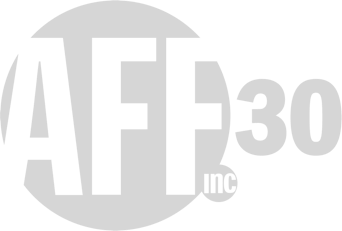“The African Slave Trades: Across the Indian Ocean”
Panel Discussion
The Arab world’s lost memory of African enslavement dominated the panel discussions that followed the screening of The African Slave Trades: Across the Indian Ocean. The film’s narrator, Nigerian writer and Nobel Laureate Wole Soyinka, noted that “each time an attempt has been made or even the actual product of this inquiry has been placed before the world, it has been completely overwhelmed by the authentic atrocities recorded in the Transatlantic slave trade. And so the history of the African continent has been shortchanged in terms of its comprehensiveness, as a result of the neglect of this particular passage, this experience of the African peoples.”
“When we began this film project,” said Richard Rein, the film’s French co-director, “we opened Pandora’s box. Our aim is not at all to lay guilt on the nations which are practically all compromised in this tragedy. Our aim is to shed light on this story in an educational way with the help of historians and sociologists. What we have learned is just the tip of the iceberg.”
Panelist Salah Trabelsi, an expert on medieval Arab manuscripts who appears in the film, is one of the historians today attempting to set the record straight, “In general,” he told the audience, “slavery in the Arab world has been characterized by a deafening and embarrassing silence. So, when certain historians have tried to approach this history, the first response has been to say there are no sources or texts. But in trying to deepen our knowledge we wind up finding an enormous number of testimonies, dating from the first centuries of Islam through the last centuries, up to the period of independence.”
While sources do exist, both in the form of texts and iconography, they have largely remained the private domain of specialists who have spent decades of their lives combing through the archives. “What we are trying to do,” said the film’s American co-director Diane Seligsohn, “is to get this information out to the general public and especially to students. The hope is the film series will be broadcast but also made available on DVD to schools, possibly with workbooks and teachers’ manuals, because so far in schools, whether it be in the United States or in France, where several of us live, it is not taught.”
Present in the audience, Olaro Otunno, a Ugandan and former UN representative for Child Soldiers, pointed out that in the Great Lakes region of Africa, the Arab slave trade is relatively well known and is even taught to some extent in schools. “There are two routes which were used,” he said. “One was the Indian Ocean; the other route was by land through today’s Sudan into Egypt, then the wider Arab world and beyond. What is missing is what happens to these Africans after they’ve left the African soil. They disappear into history. So the light which is being shed on where they went , what their experiences were, and the survivors of that era is very important.” Otunno added that “to this day if you go to African villages in the Congo or Burundi, there are still people who can relate what their forefathers told them, including the names of slave traders, the routes they used and the struggles they conducted during that period. Not all is lost, but time is certainly running out.”
Panelist Aisha Bilkhair is a UNESCO Slave Route Project advisor to the African Slave Trades film series. She has spent more than 30 years of her life documenting the history of her ancestors brought as slaves to Dubai some five generations ago. She said, “Each and every person who had tears and sweat in the desert and in the sea of the Persian Gulf, we need to tell those stories. So I took it upon myself and started documenting my family since I was 16 years of age and I collected letters and stories and everything that I could put my hands on…Hopefully, this project can continue and those stories will be heard and we will see then the depth of the African influence on the Persian Gulf.”
Featured Director
Diane Seligsohn
Diane Seligsohn is an American journalist and university lecturer who has lived in Paris for over three decades and now divides her time between France and St Petersburg, Florida. Diane received her BA from McGill University in Montreal, Canada and her MA from NYU. She began her career in journalism at the Canadian Broadcasting Corporation's New York office, where she worked for five years before moving to France. As head of information for the international federation of newspaper publishers for two years, she gained knowledge of and insight into press freedom issues. She first visited Africa in 1997, when as Head of Media Relations for the French doctor's group Médecins du Monde (Doctors of the World), she led a press trip to visit the organization's AIDS prevention and care programs in Uganda and Tanzania. The pilot episode of her educational documentary film series, The African Slave Trades: Across the Indian Ocean, featuring Nobel Laureate Wole Soyinka, was shown at the New York African Film Festival. Learn More

